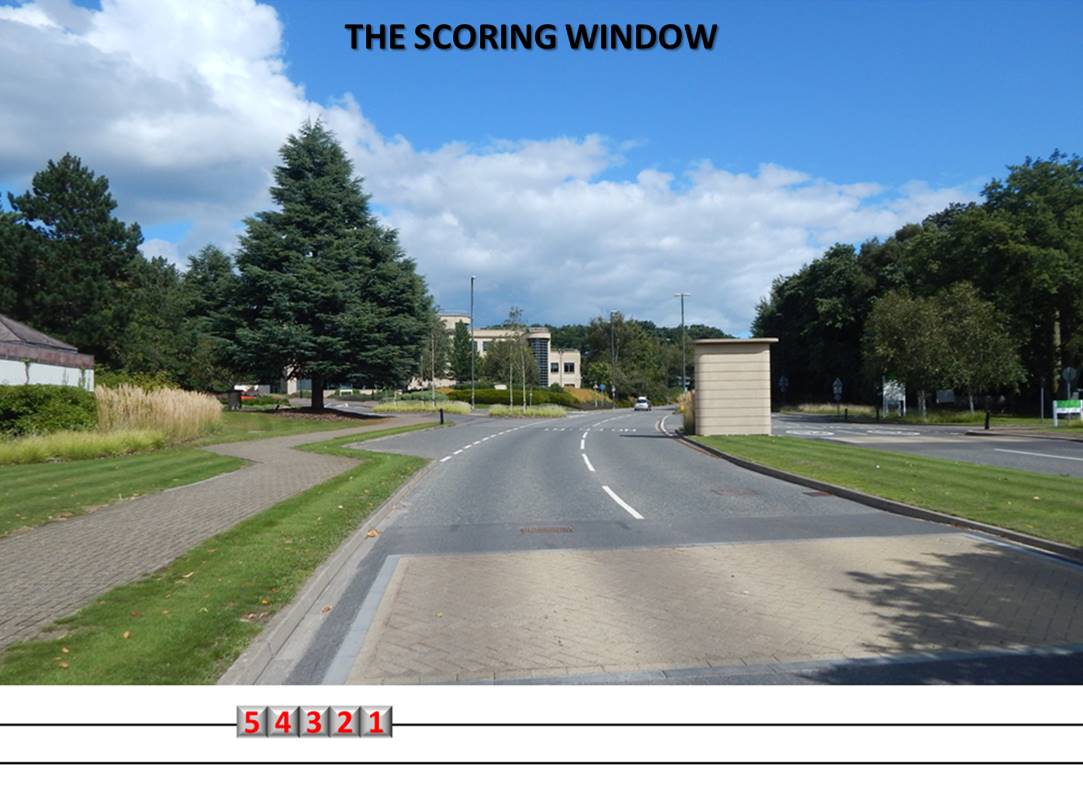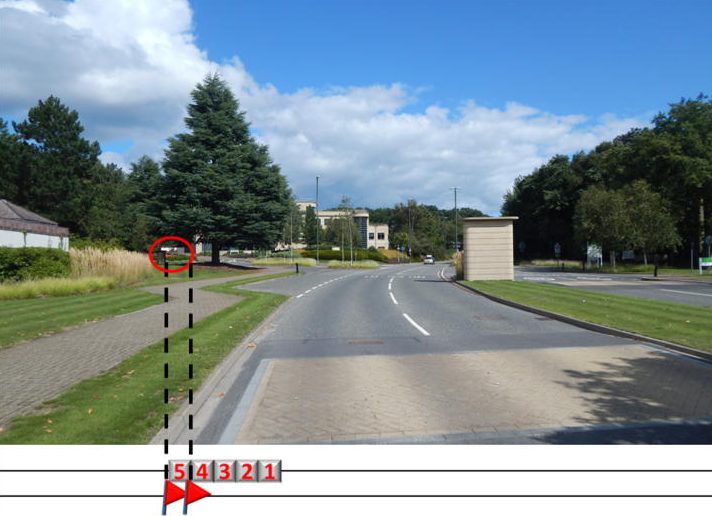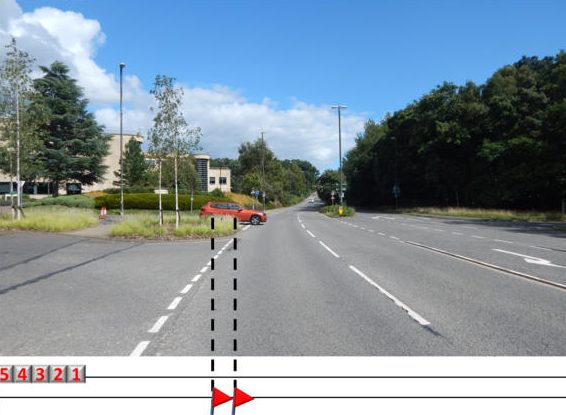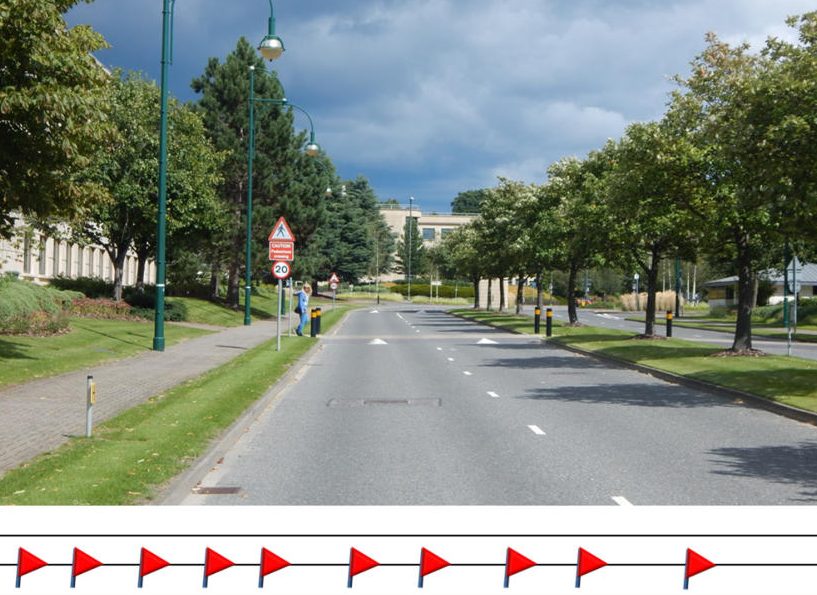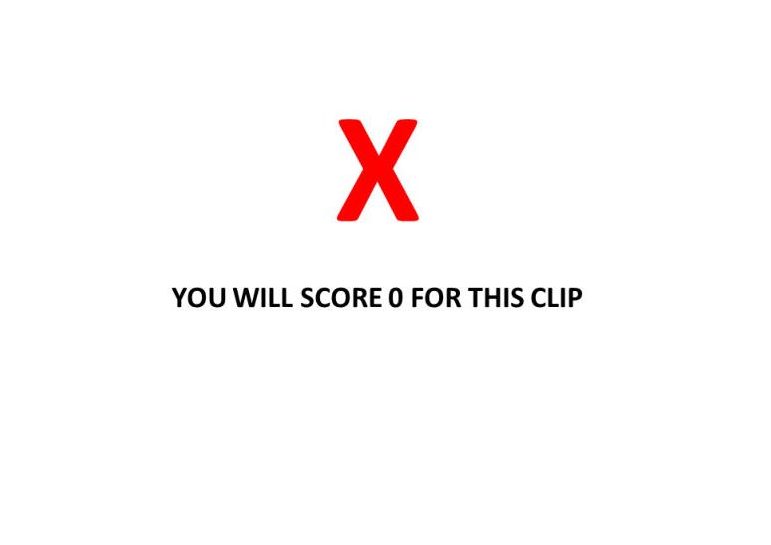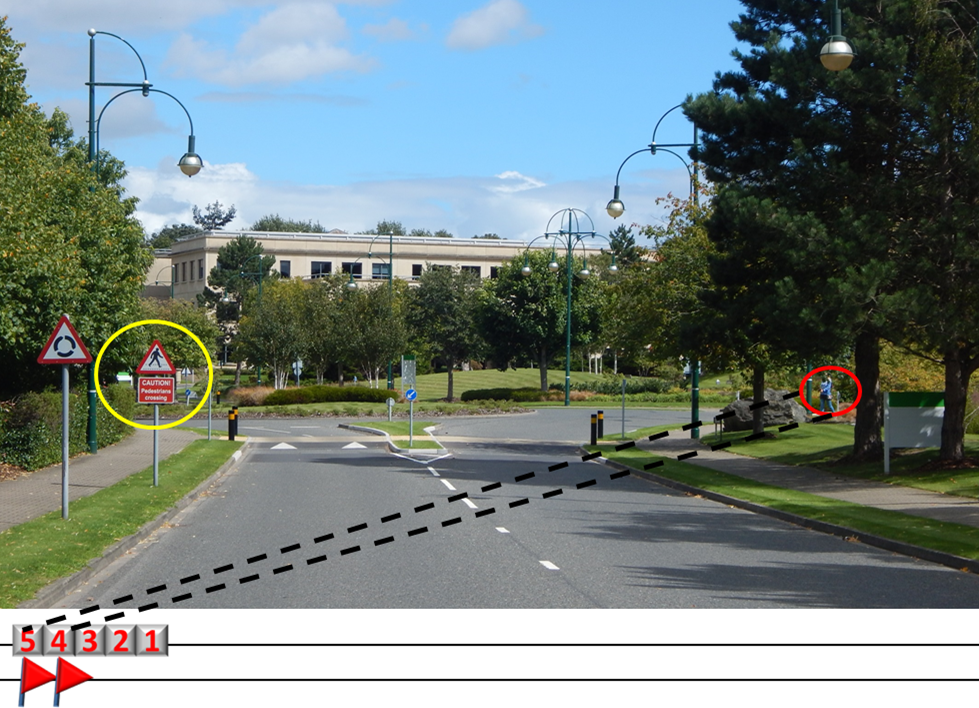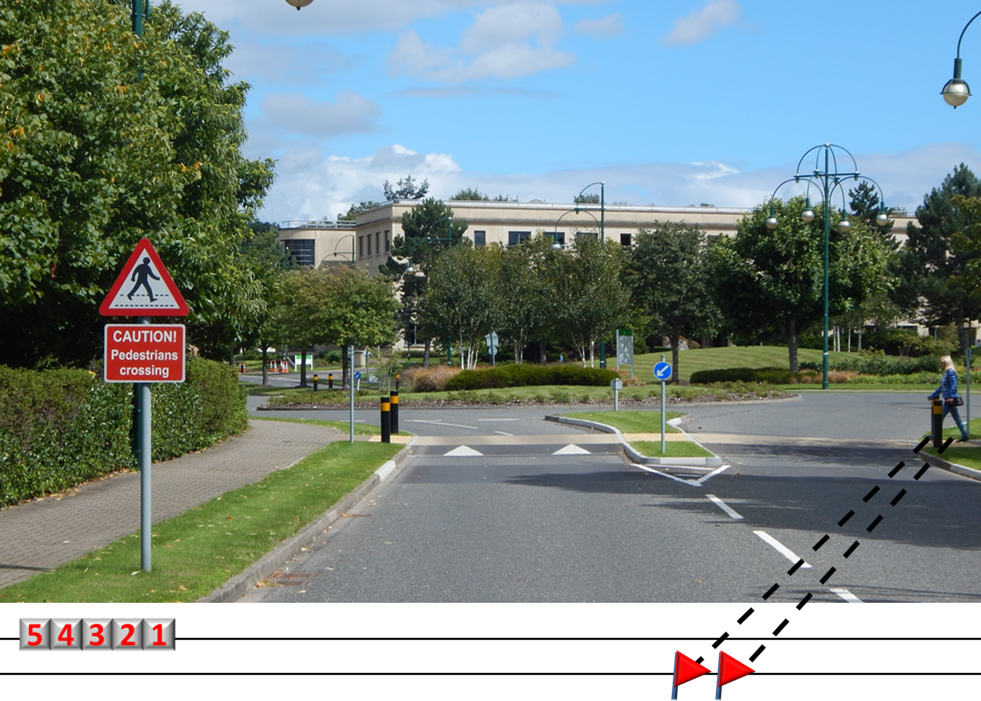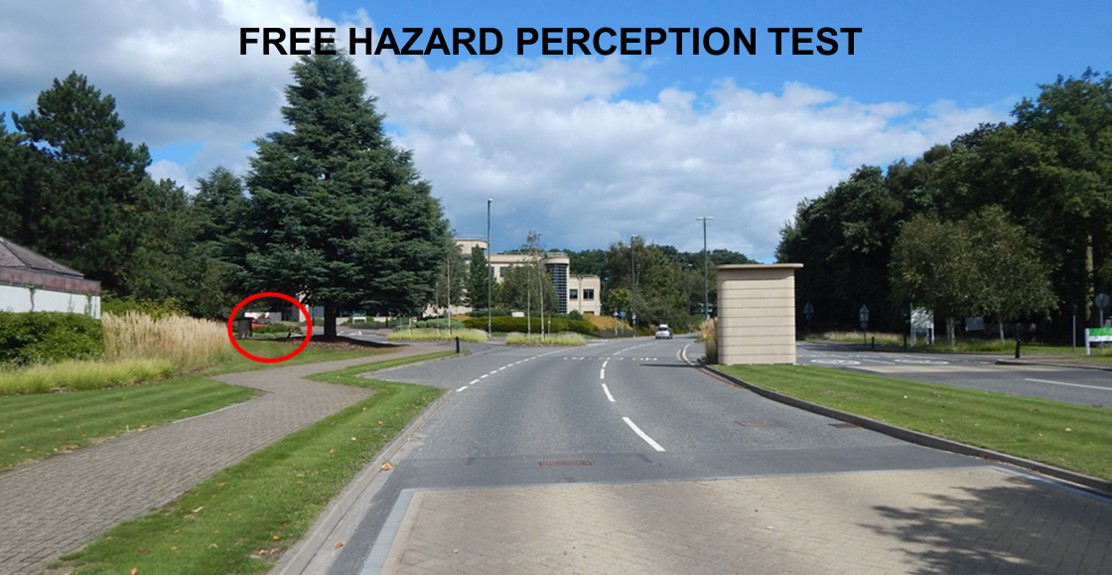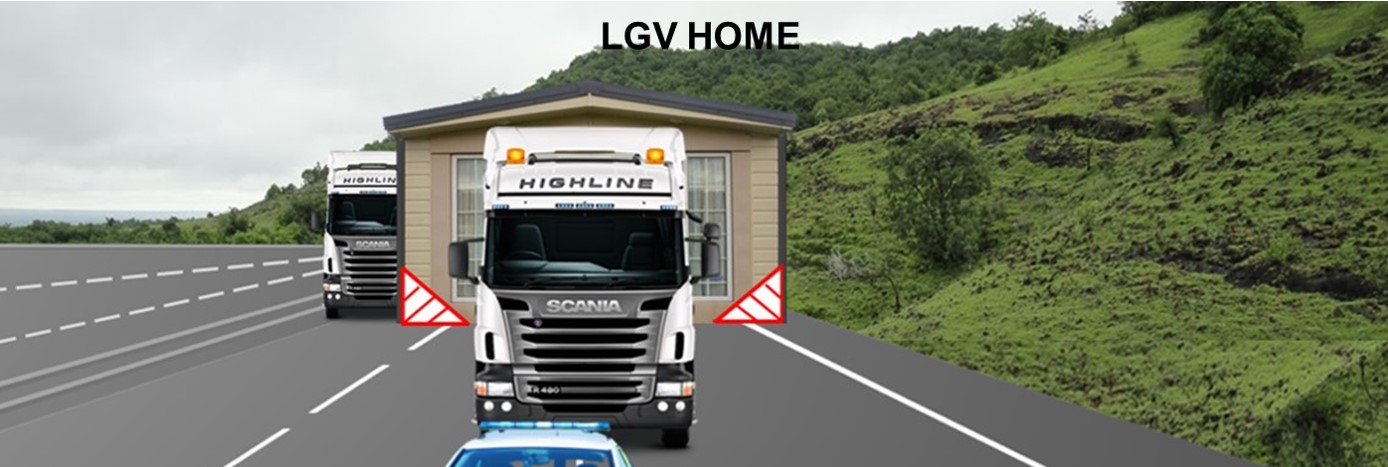HAZARD PERCEPTION
The hazard perception (HP) test has been developed by the DVSA to help determine an individual’s reaction to potential hazardous situations. If you are about to undertake a theory test for Cat B, at the end of your multiple choice questions you will be shown 14 video clips. The videos all last about 1 minute in duration and will involve a situation you must react to by reducing your speed or changing direction.
There are 15 scoring windows over the 14 video clips so this means one of the videos will have two scoring windows. You can score a maximum of 75 but the pass mark is 44. The same test will be sat when doing a Cat C theory test, the only difference is that you are shown 19 video clips with a maximum score of 100, the pass mark being 67. On the Cat C theory test, the HP is a separate test and not combined like Cat B. Sounds easy? It’s not, if you fail any part of your Cat C theory, you will only need to retake the part you have failed. However, If you fail either Cat B theory multiple choice or hazard perception you will have to retake both parts again.
HOW DOES THE TEST WORK
Before starting your HP test you will be shown a short video explaining how the test works. The narrator tells you that only the situations that develop will score. You will score nothing if they don’t develop, but it is Important that you respond to all potential hazards.
Safe driving is about reacting to all situations, not contemplating whether they develop or not. By reacting to all situations, you will reduce the likelihood of an accident. The definition of a hazard is a situation that would cause you to change speed or direction and the mouse click is an extension of your reactions.
The scoring window is embedded in the video time-lines and cannot be seen by you. The window will be open for approximately four seconds and as the video plays the score will reduce from 5 to 1 the window will then close. In the picture below there is a vehicle approaching the main road from the left (circled red).
At this point you would ease off the accelerator and prepare yourself for the vehicle not stopping at the junction. As soon as you identify the vehicle click the mouse. This tells the programme that you are reducing your speed. A red flag will appear on the screen.
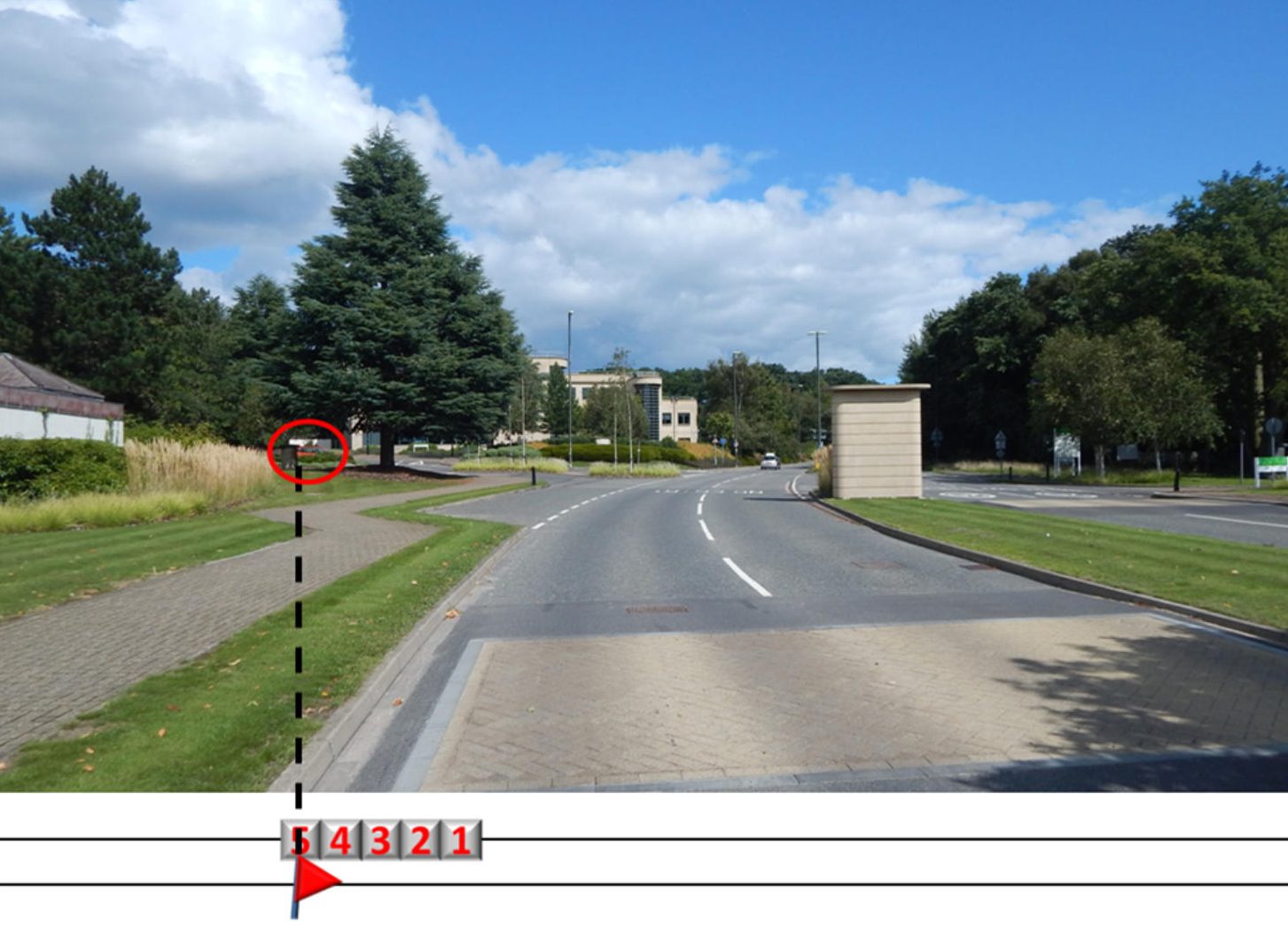 The purpose of this test is to gauge your reaction time to moving hazards. For those that are taking this hazard perception test at Cat C level, you will need to forget your judgement gained over years of experience. Do not try to analyse the speed of the hazard, react immediately. If you try to use your experience and judgement you will probably fail this test. Believe it or not the tests for both car and lorry are exactly the same. In a perfect world one response with the mouse would be adequate for each situation.
The purpose of this test is to gauge your reaction time to moving hazards. For those that are taking this hazard perception test at Cat C level, you will need to forget your judgement gained over years of experience. Do not try to analyse the speed of the hazard, react immediately. If you try to use your experience and judgement you will probably fail this test. Believe it or not the tests for both car and lorry are exactly the same. In a perfect world one response with the mouse would be adequate for each situation.
On most of the video clips shown, the scoring window opens almost immediately as a moving hazard comes into view.
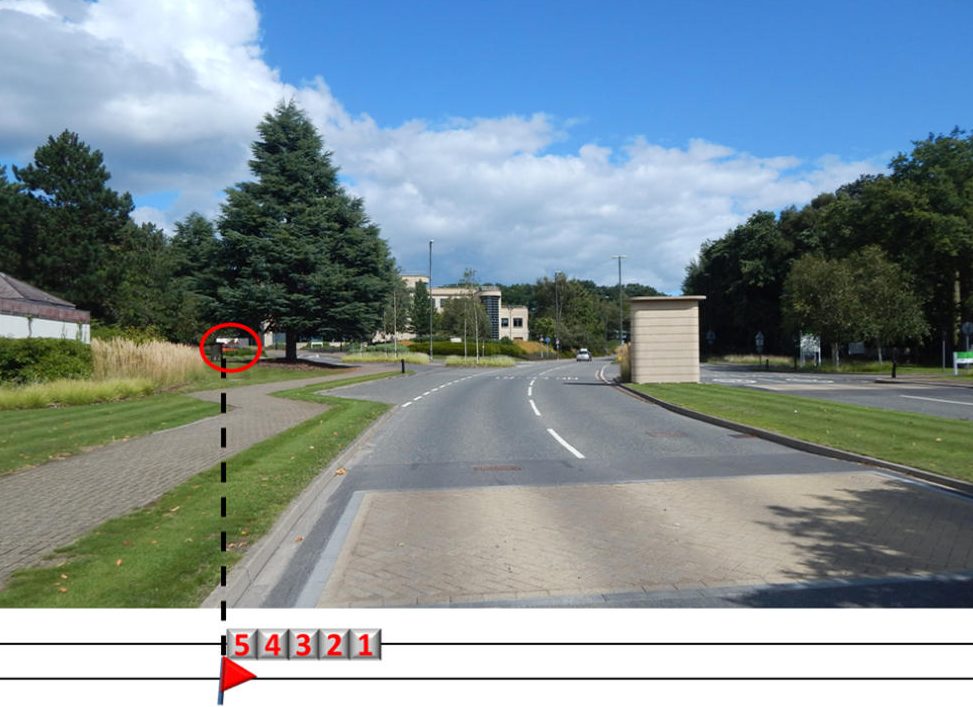 As the picture above shows there are clips that are not consistent with the majority.
As the picture above shows there are clips that are not consistent with the majority.
Responding immediately could result in you not scoring as the scoring window has not quite been aligned correctly.
This is easy to rectify by responding twice on all hazards irrespective of whether the window appears straight away or not.
Respond then count 1,2 and respond again. You will always be given the first score registered in the window and you will not be deducted any points.
There could be several situations that you will need to react to on each video clip. Once you have reacted to the first one, you must keep looking as it might not develop.
You could possibly have up to eight flags on each video.
As you can see by the picture below this particular situation does develop. By responding early your vehicle would be travelling at a safe speed allowing you to stop under control.
If you wait for the situation to develop and respond at this point you are very late in your response as it only now you would consider reducing your speed. As you can see the scoring window is at the point where the vehicle first came into view. You will not have scored anything.
It is important that you do not constantly click the mouse. Only respond when you see something that will cause you to change speed or direction if it crossed your path.
In the picture on the left you can see that the candidate has responded too many times.
The computer will determine that you have been responding in a pattern and have not displayed your ability to recognise a hazard. At the end of the clip you will be shown a window like the one seen to your below, indicating that you have scored nothing for the clip.
It is not just moving traffic that you need to be alert to as pedestrians also play a big part in the hazard perception test. The picture on the below shows a pedestrian walking from the right towards a crossing. There is also a sign on the left telling you that there is a pedestrian walkway.
You should still respond by clicking the mouse as previously shown as there may be a possibility the pedestrian will use the crossing.
As you can see the pedestrian did in fact use the crossing.
Because you responded as soon as you saw the pedestrian, you will have scored maximum points.
If you left your response until the pedestrian started to cross you would score nothing as you would be indicating that you did not recognise and react in good time.
The picture below shows the same pedestrian again walking from the right towards a crossing.
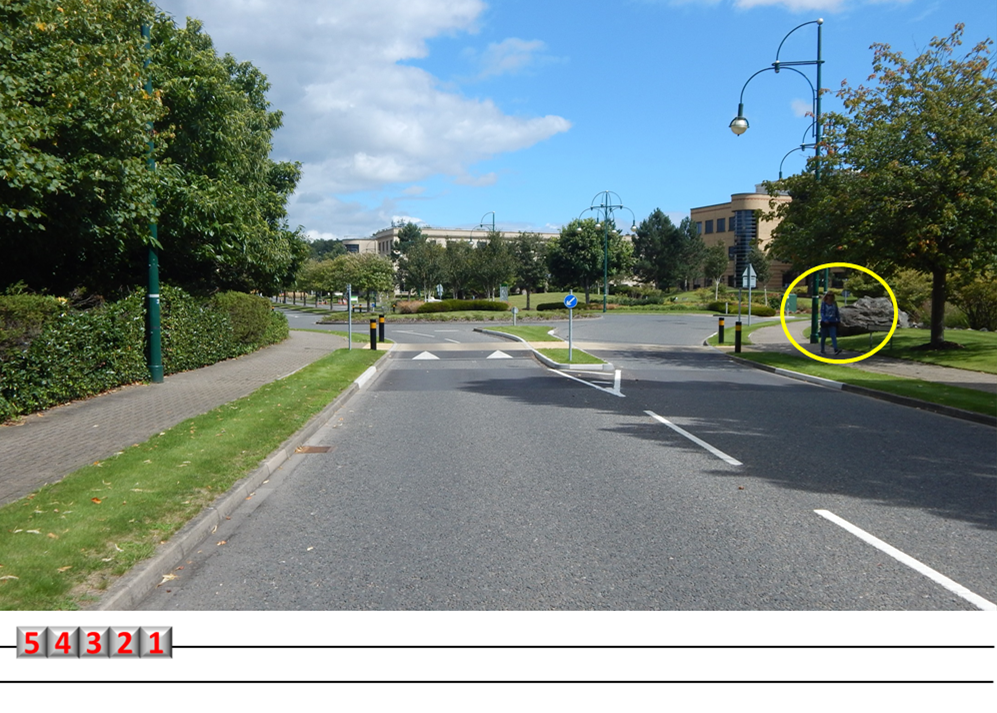 In this case the pedestrian walked passed the crossing and made no attempt to use it.
In this case the pedestrian walked passed the crossing and made no attempt to use it.
However, you were right to respond when you did. Even though this situation did not develop it shows that you were aware of what could happen.
There was no harm in responding even tough there was not a scoring video.
In the final picture you are driving down a country road. There is a sign on your left warning you that you are approaching a crossroads. The sign is a big clue as, due to the brow of the hill, you cannot see the junction. The sign indicates that you are on the main carriageway. When you see the sign, scan to your left and right for any sign of additional traffic.
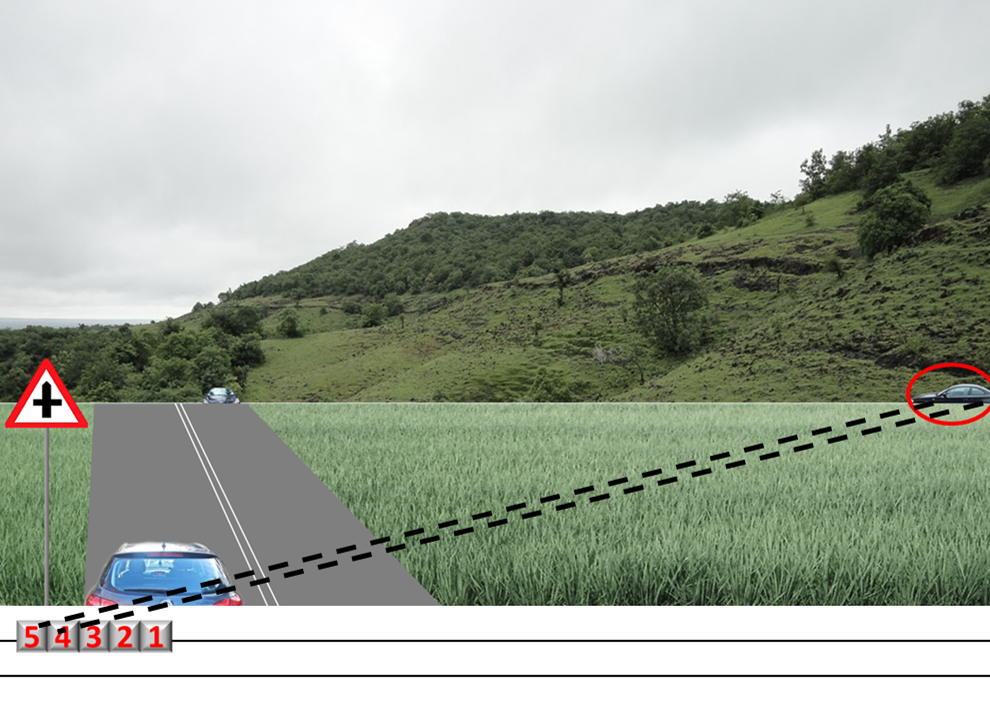 To your right you see the top of another vehicle heading towards the crossroads and your immediate reaction would be to ease of the accelerator in preparation, not just for the junction, but for the approaching vehicle from your right. This is classed as changing speed.
To your right you see the top of another vehicle heading towards the crossroads and your immediate reaction would be to ease of the accelerator in preparation, not just for the junction, but for the approaching vehicle from your right. This is classed as changing speed.
Respond as previously shown. (Click 1-2 click again).
I hope that this short presentation has been helpful.
The most important thing to remember when taking the HP test is to respond by clicking the mouse when appropriate. You must remember to respond twice on each situation, leaving at least a second between clicks. You may find that it is easier to count 1-2 between responses. It is important that once you have responded to a situation you do not sit back and wait for the next video clip. There is a possibility that not all situation will develop, and always remember there are two scoring windows on one of the clips.
Those of you taking your LGV test you will incur problems when taking this test. Experience has taught you to recognise hazardous situations earlier and, in some respects, you respond in a subconscious manner. You must react immediately to all situations without trying to work out whether it will develop or not. Remember the Cat C theory hazard perception test is the same as the cat B, with an additional five clips. Forget your experience and treat them all with the importance of a learner. The scoring windows have been placed in a pre-determined position based on someone else’s perception not yours. In the real world we delay our actions momentarily whilst we assess and this would be classed as ‘thinking distance’. The test is asking for immediate responses.
The test video clips have been changed to CGI (computer generated images) but there are still a lot of learning programmes on the market that contain real time videos. On these programmes you will find the ability to check your score and this can allow you to change the way you respond to gain maximum points.
On the test you do not get this option and it may mean you to start to respond too late and too many times. When compared to other products, they show no relevance to the actual test clips. The vehicles are travelling at a much higher speed with many situations on each clip. This can cause you to over respond.
The team are responsible for training many students a year on HP with a with an extremely high pass rate on all categories. The odd percentage fail is due to over responding and single responses.
Below is a link to a free Hazard Perception site. Try the tests to enable you to get used to responding but always remember the DVSA is different. All clips are CGI and are not as busy with the hazards being clearly identified.



